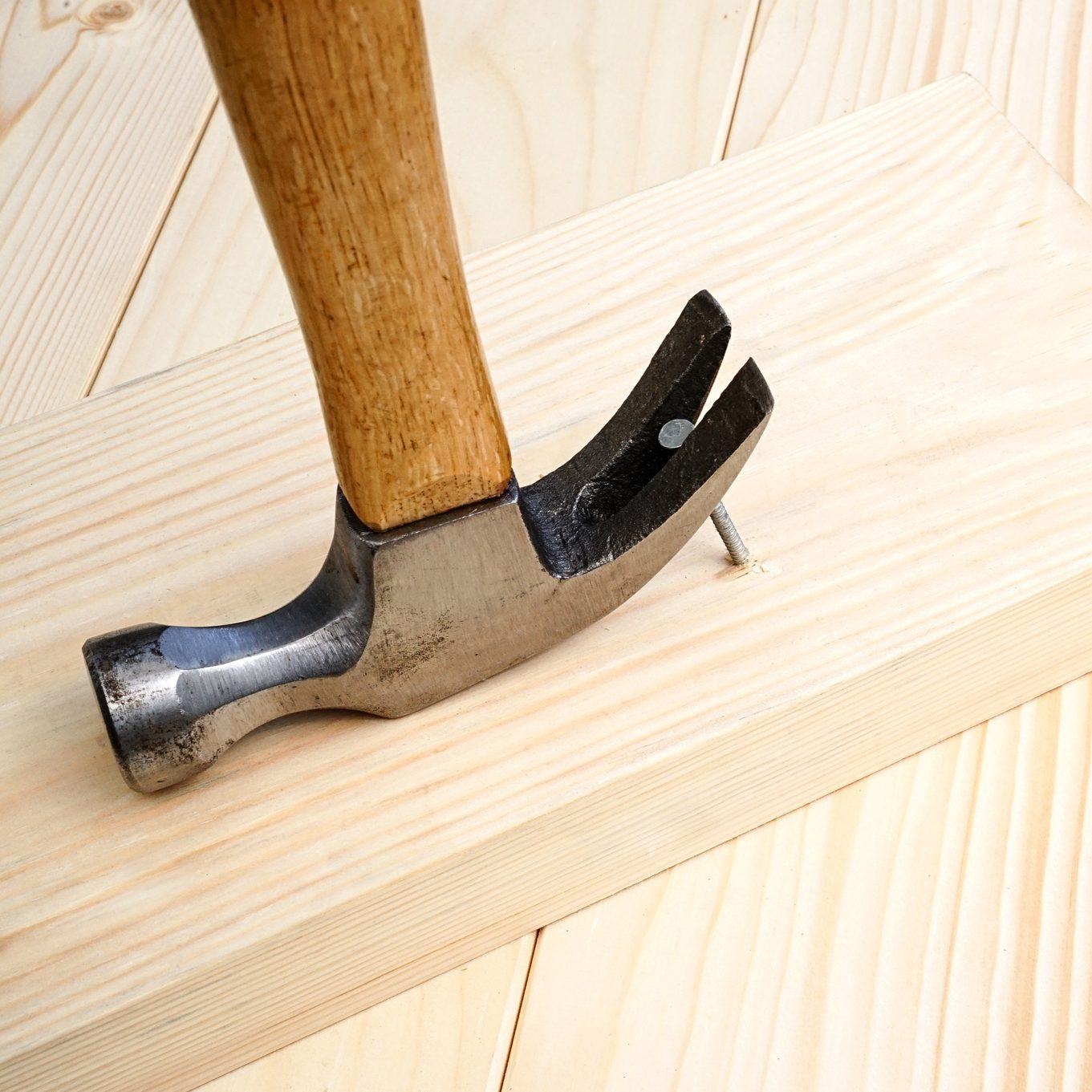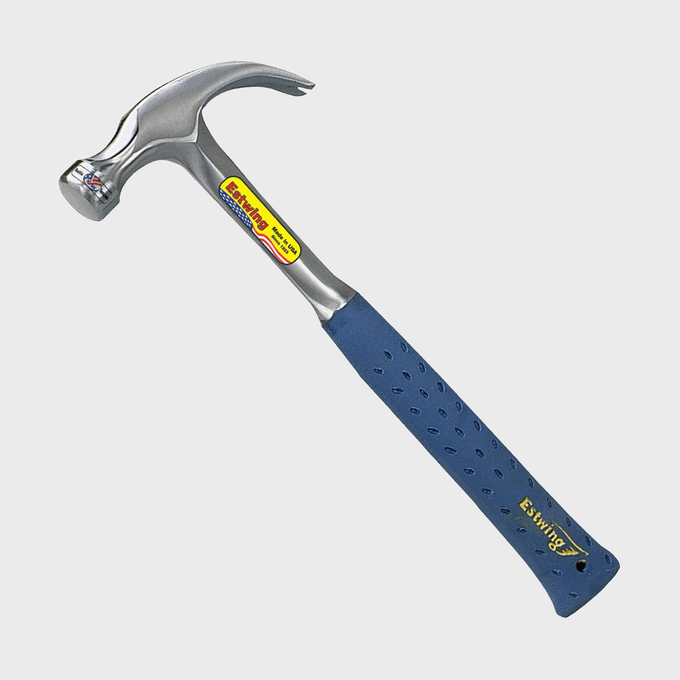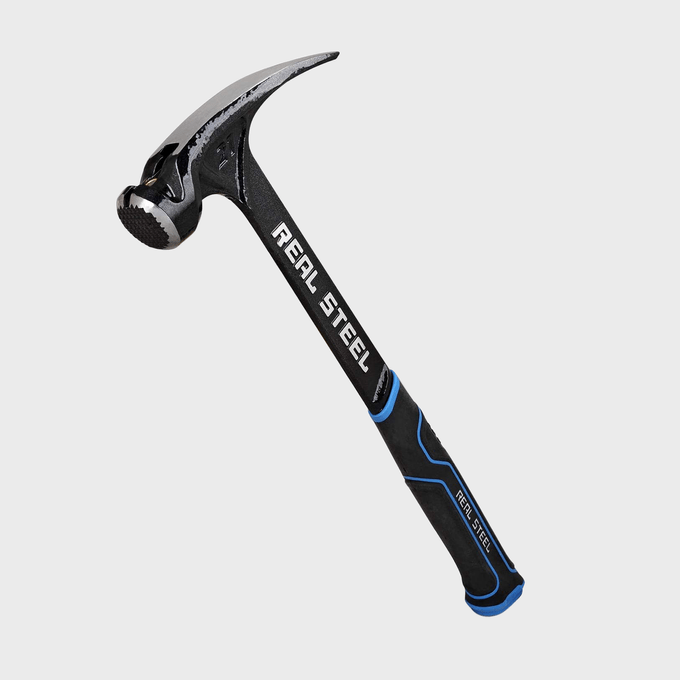Claw hammers can pull nails as well as pound them. They're as useful around the house for DIY projects as they are on construction sites.

What To Know About Claw Hammers

I learned the proper way to swing a claw hammer from an 18-year-old coworker on a construction project. I was new to the jobsite and had a habit of holding the hammer halfway up the handle. She suggested gripping it at the end.
That small change made all the difference. I was pleased how easy it was to accurately hit nails. It took two or three swings to sink one, instead of five or six.
We used framing hammers, a type of claw hammer, on the project. They were heavy, with serrated faces that left nasty gouges in the wood. The serrations bit into the nail heads and didn’t slip. But because we covered the framing with drywall, the gouges didn’t matter.
That isn’t the only type of claw hammer, however. There are lighter ones with bent claws for driving and pulling finishing nails; even lighter ones for detail work; and ones with long noses for more accurate pounding and pointed claws for digging out nail heads. The variety is surprising.
On This Page
What Is a Claw Hammer?
A hammer, of course, consists of a heavy head attached to a handle. A claw hammer includes a forked nail-pulling tool at the back of the head.
Stone hammers existed three million years ago. But they lacked handles until about 30,000 B.C., and forged-metal hammer heads didn’t appear until the Bronze Age, about 3,300 B.C. Although there is evidence of claw hammers dating to 1514 A.D., American blacksmith David Maydole is generally credited with inventing the first one in 1840.
Maydole forged his hammers with heads tapered to the cheek, where the handle attaches. The design was so popular that Maypole’s shop expanded to keep up with demand. It’s the same design most manufacturers use today.
What Is a Claw Hammer Used For?
A claw hammer head is usually made of forged steel, although titanium heads are available. The face, shaped into a circular anvil about an inch in diameter, is primarily for driving nails. The claws can be straight or curved, flat or pointed. Although designed to pull nails, they also have other uses.
You can use a claw hammer for:
- Framing, installing roofing and siding and other heavy-duty construction.
- Installing and removing doors, windows and trim and other light-duty construction.
- Home utility purposes, such as hanging pictures, building fencing and driving stakes.
- Demolition.
- Digging small holes in the ground and even uprooting weeds.
Types of Claw Hammers
Although the design is fairly standard, a number of variations make the tool better for some purposes than others.
Utility hammer
The hammer most people keep around the house. It weighs about 16 ounces or lighter and with an elongated neck. The extreme curve of the claws provide optimum leverage for pulling nails. The handle may be made of steel, fiberglass, or a hardwood such as hickory or ash.
Framing hammer
Framing hammers — AKA rip claw hammers — are heavier than utility hammers (from 20 to 24 ounces) and tend to have larger faces that may be serrated or smooth. The faces on some feature short necks for pounding accuracy. The claws are typically straight. The handle, which supplies leverage for pulling nails, is longer than a utility hammer and made of metal, fiberglass or wood.
Electrician’s hammer
An electrician’s hammer has straight claws like a framing hammer, but it’s a little lighter (about 18 ounces) with a long neck. The extra neck length makes the hammer more useful in tight quarters.
Flat-top hammer
A type of framing hammer, the flat-top hammer is forged with a smooth, straight surface on the top of the head. This helps in tight spaces as well.
Long-neck hammer
Manufactured in Japan, long-neck hammers have three features you won’t find on North American models. The neck is longer than an electrician’s hammer, the claws pointed, and the cheeks molded with faces for pounding. The curved claws can be used like a cat’s paw pry bar to dig into wood and extract sunken nails.
How to Choose a Claw Hammer
Your choice of hammer depends on the task. A large framing hammer is overkill for most light carpentry purposes, but a utility hammer simply won’t do for heavy construction. When shopping, consider the following:
- Weight: The point of division between a light-duty utility hammer and a heavy-duty framing hammer is about 20 ounces. You won’t save energy grabbing an easier-to-swing utility hammer for heavy-duty work; you’ll actually expend more.
- Handle: While wood handles are still common, molded steel and fiberglass ones are easier to hold, especially with a rubber grip.
- Balance: A good hammer is well-balanced and easy to swing. That’s important for accuracy.
- Claws: Curved claws are better for pulling small nails than straight ones. But if you’re going to use the hammer for full-on demolition or pulling 16d nails, go for straight claws. Pointed claws are extra useful for demolition, but not easy to find.
- Cost: A lightweight utility hammer good for tapping small nails to hang pictures might cost only $5, while a good-quality framing hammer might cost as much as $30. Average is around $20. Hammers with titanium heads can cost much more.
Best Claw Hammers
Best utility hammer

The Estwing 16-Ounce Curved Claw Hammer features all-steel construction, a comfortable rubber grip and a smooth face. Great for everyday use.
Best framing hammer

The Real Steel Ultra Framing Hammer features a serrated face and flat top. It weighs 21 ounces so you won’t get tired using it. The extra-long steel handle provides leverage for pounding and pulling.
Best splurge

The Stiletto Smooth-Face Framing Hammer is made of lightweight and super durable titanium and weighs only 15 ounces — less than many utility hammers. You can use this hammer, with its extra-long, curved handle, for just about any job.




















